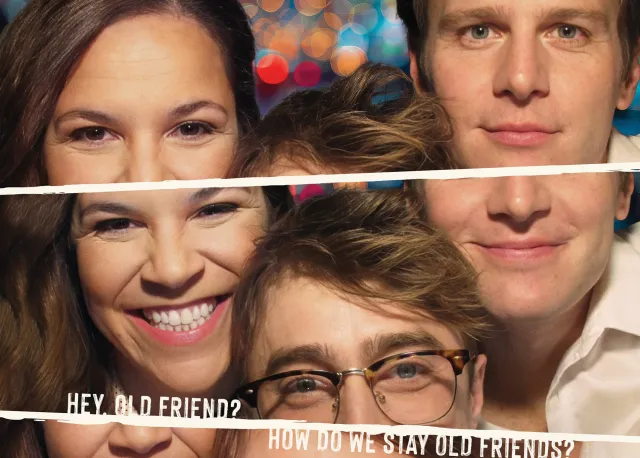These Halcyon Days is a sweet and funny story about a friendship that forms between two people who meet while in a nursing home. Though the two have different backgrounds and opposite reactions to their present predicament, Patricia and Sean’s bond is real and helps both of them deal with the strain of their last days. TheaterMania spoke with Kinahan about her inspiration for the play’s two main characters and why, for her, the story is personal.
What was your inspiration for this play?
It was very much inspired by my own uncle. He was a gorgeous person and a poet and historian and he lived a wonderful life. But he got dementia in his eighties, and he was in a nursing home in North County Dublin. It was quite an experience to watch him kind of fade away through a number of decades into someplace unknown. You’d have some wonderful visits where he was thrilled to see you, and even if he didn’t quite know who you were, he’d be up for the chat because that’s the kind of character he was. But then other times you’d go and he’d be disoriented and distressed.
One particular day, I went with my daughter, who was five at the time. And she’d picked a little flower in the garden. And Sean wasn’t in the best of form when we arrived, but there was something when she gave him the flower. He just looked at the flower, and he put it up to his ear and pretended it was telling him a story and then he spoke to the flower and he put it up to her ear as if the flower was telling her the story. It was really playful, and I remember him being exactly like that with me when I was a kid. And he got into great form, and we had a wonderful visit. And it just kind of struck me, he’s all still in there, all that intellect and that culture and that playfulness and that joy. Do you know? There’s always the capacity for joy and there’s always a capacity for meaning.
Is the Patricia character also based on a specific person?
She’s an amalgamation of my mother and a lot of women of that generation who I grew up with. They were a fabulously feisty crew of women who knew Ireland in hard times. It wasn’t easy being a woman in Ireland in the fifties and sixties and seventies. You couldn’t work if you were married in the seventies in Ireland. And those women, they kind of brought us through, they brought us into a twenty-first century where economic independence was possible, contraception was legalized, divorce was legalized. I just kind of wanted to say, “You know, you were amazing. You’re not on the scrap heap. We still respect you and love you and you’re still a part of our lives. And thanks.”
My mother died in 2003 but her thing, she never wanted to go into a nursing home. Patricia is how I imagine my mother would have been in that situation, kind of fighting with it, and fighting with the diagnosis.
What did you want your audience to come away thinking or feeling?
I think theater is a reflection of ourselves and it’s a means through which we can explore our own humanity. And it’s all about opening up the conversation and opening up the experience. I think we have a tendency, because old age is something we’re all heading into, and we all fear, to sort of, as a society, cordon it off and push it away. And I wanted to place it front and center and celebrate it. You know, we think we can control our mortality, we think we can control our fertility, we think we can control our destiny, and I think in the Western world, we’re kind of adamant about that. But the truth is underneath it all, we know we can’t. And you’re better off embracing it, because it’s part of all of us.
Have you made any changes to the play since moving it from Ireland?
I did make some changes. The premiere was at the Dublin Theater Festival last year. It ran for literally a week. And it had a slightly different ending. The play was a big success, but we still weren’t quite sure we had hit the correct ending. Theater is so collaborative, your audience teaches you a lot of things, and enough people [who] I really respect in the theater would go, “You know, I loved it but I wasn’t quite sure about the end.” Do you know? So we went back to it and we just kind of removed a final scene and slightly altered the final scene that you see here in New York. We really hit the final picture here on Tuesday night. We had two ideas basically when we came to New York and we tried one one night and one the second. And when we tried the second, we knew that was it. Our audience really liked it both nights, but you know by the feel in the room.
Do you have future plans for the play?
When it returns to Ireland it’s going on a major national tour for two months, and then it’s going to the Edinburgh Fringe Festival for the month of August. And we’ve already got a couple of invitations to provincial theaters in the States.
You know, it’s been wonderful. It has been terrific, to see that this play can travel and touch people in other countries. Because it’s not a particularly Irish story. It’s a universal story.








